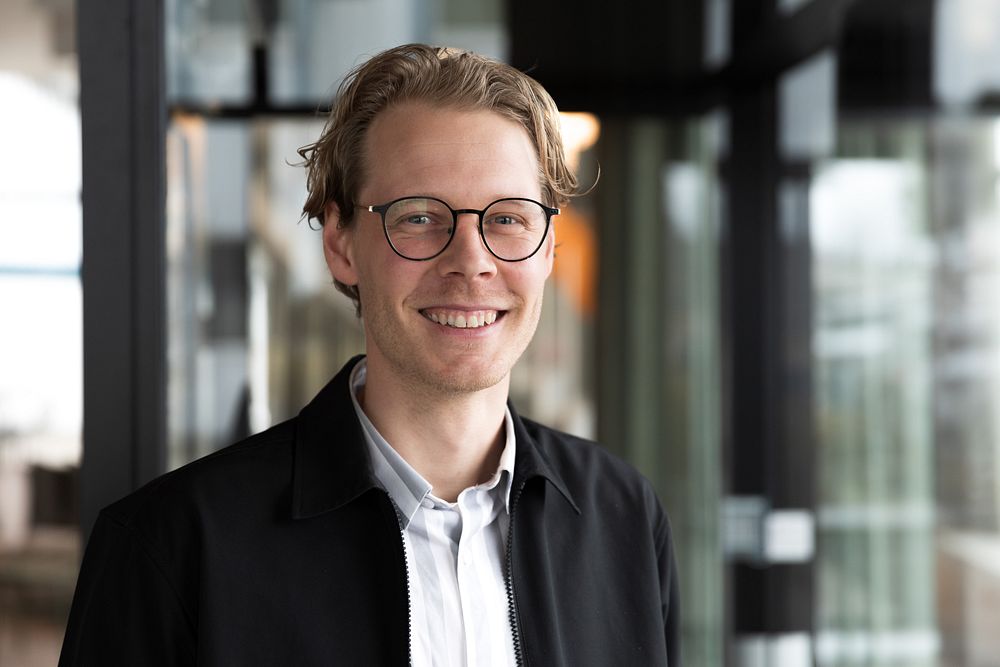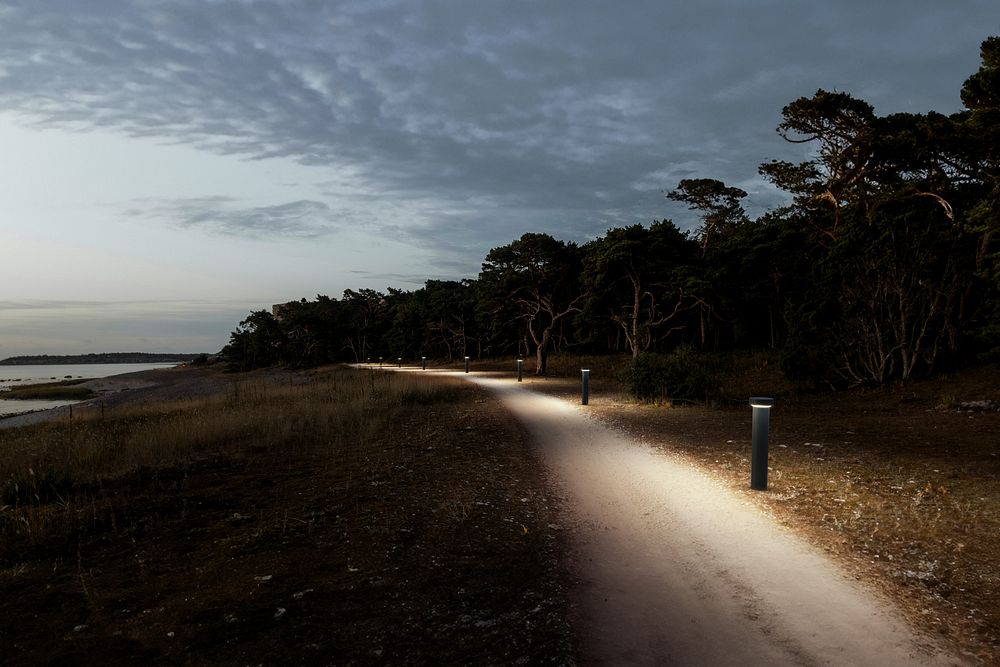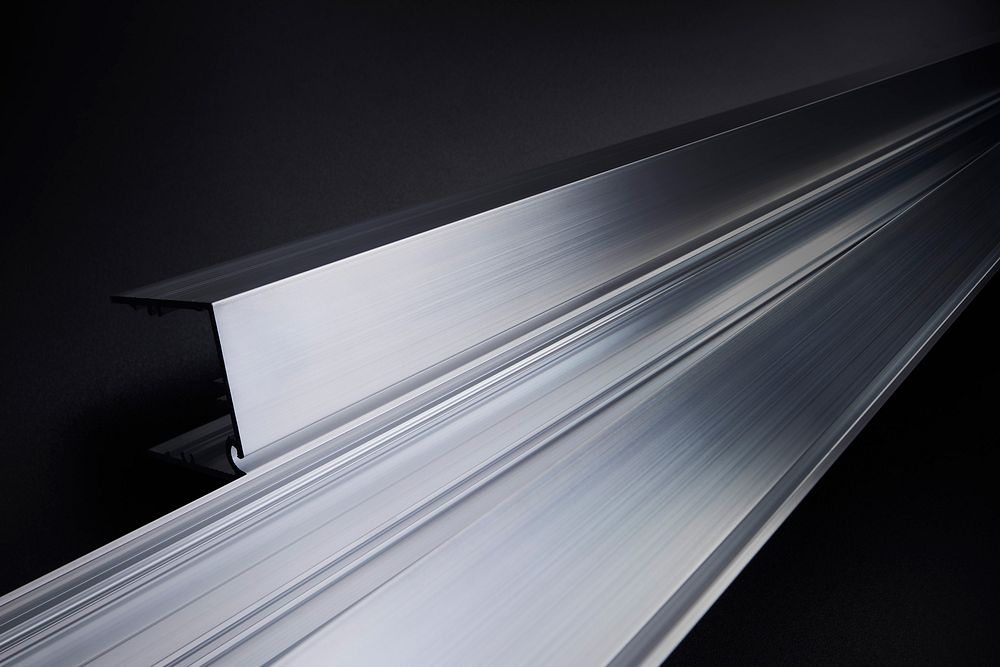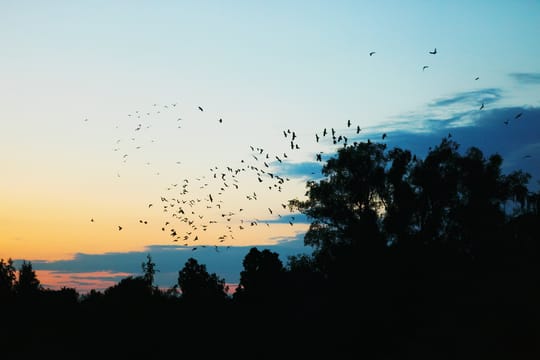
Fagerhult uses recycled aluminium for high-volume products — ensuring circular use of resources
With a focus on reducing its long-term greenhouse gas emissions, Fagerhult now choose extruded aluminium profiles containing 75% recycled material from end users. The material is used for product families manufactured and sold in larger volumes — and where the material can make a real difference. The initiative reduces Fagerhult’s climate footprint by approximately 225 tons of CO2e per year.
Aluminium is a lightweight and durable material that can be reused multiple times if recycled properly. Its environmental impact depends on several factors, including whether it is made from virgin aluminium, how it is produced, whether fossil fuels or renewable energy sources were used in its production, and if it is derived from recycled materials.

Niclas Thulin is Sustainability Manager at Fagerhult:
“We are taking a significant step forward by moving from renewably sourced aluminium to recycled aluminium (post consumer). The Notor family – together with several other product families – is now made of extruded aluminium that is 75% recycled. This results in around 70% lower climate impact than the average impact from European primary aluminium and 88% lower than the global average for primary aluminium*.”
The change affects products sold in larger volumes. The products Notor 65, Notor Recessed, Notor 36, Fjord, Vil, Multilume Hydro, and Sentra are now made of recycled aluminium.
“We intentionally upgrade the materials for our larger product series because it significantly impacts Fagerhult's greenhouse gas emissions. For the Notor family alone, we used approximately 65 kilometres of aluminium profiles in 2024, and nearly all of this volume has now been replaced with recycled material,” says Niclas Thulin.

The change is part of Fagerhult's systematic sustainability work and a considerable step in reducing greenhouse gas emissions in Scope 3: the company's indirect emissions from purchased materials. The Science Based Targets validate Fagerhult's climate targets, and the ambition is to achieve net zero emissions from the entire value chain by 2045.
“This is our most important decision regarding materials, at least with reduced climate impact as the fundamental incentive. The majority of our emissions come from Scope 3, and through this change, we are making a difference where it has the greatest impact. Based on last year's volumes, the switch to recycled aluminium can reduce emissions by approximately 225 tons of carbon dioxide equivalents annually.”
*Climate impact excluding the extrusion process. EPD compared to the European average for primary aluminium (European Aluminium) and the global average for primary aluminium (International Aluminium).

Relaterte nyheter

Lukke ringen – og forlenge armaturens livssyklus
Konseptet med å gjenoppbygge gamle armaturer for å spare materiale og energi, blir stadig mer populært. Av og til trengs det bare litt kjærlighet og teknisk kunnskap for å få en utdatert armatur til å skinne igjen. Vi møtte Emma Hallman, Mathilda Holl og Andreas Ekslätt, teamet bak ReLight hos Fagerhult, for å snakke om utfordringene med å finne løsninger som tar gamle armaturer inn i fremtiden. Hos Fagerhult preges alt arbeid av en dypt forankret innovasjonskultur. Det kan hende det skyldes grunnleggeren Bertil Svenssons fokus på å løse utfordringer med til tider begrensede midler – og nysgjerrighet og engasjement. I motsetning til i dag er det ikke sikkert at bærekraft var et kjent begrep på den tiden. Men å bruke ressursene våre på en bevisst måte og ha som mål å levere høy kvalitet har alltid kjennetegnet Fagerhult. I dag har et nytt fokus på sirkularitet fått oss til å tenke nytt og gjort oss bevisste på å finne løsninger som varer lenge. Fagerhults Bespoke Lighting Solutions-avdeling (BLS) har utviklet unike armaturer og tilpassede løsninger i mange år. Derfor er vi godt kjent med å renovere og oppdatere gamle armaturer. Men målet om å gjenbruke og gjenoppbygge gamle armaturer for å redusere klimapåvirkningen har økt over tid. I denne prosessen blir eldre design og teknologi oppdatert ved hjelp av moderne løsninger for å dekke morgendagens krav. Sitat ReLight de gamle armaturene dine For ReLight-teamet hos Fagerhult finnes det ingen uvanlige spørsmål eller umulige løsninger. Hver eneste dag håndterer de forespørsler om spesialutviklede belysningsløsninger for prosjekter fra Fagerhults markeder. Prosessen er kompleks, men over tid har de funnet ut at enkelte prosjekter er perfekte for å gjenbruke gamle armaturer i stedet for å investere i nye. «For oss er kjernen i alle ReLight-prosjekter armaturens kvaliteter når det gjelder belysningskomfort, sikkerhet og estetikk. Ved forespørsel beregner vi også for å finne ut om – og hvor mye – vi kan redusere armaturens totale klimapåvirkning gjennom livssyklusen.», sier Emma Hallman. I ReLight er det en uttalt vilje til å spare materialer og energi, og til å gjøre en innsats for miljøet ved å oppdatere armaturene. Men ikke alle gamle armaturer kan få evig liv. Noen er utdaterte og bør resirkuleres i stedet for å renoveres. Img «Hvis omstendighetene ikke oppfyller kravene våre og armaturene ikke kan gjenoppbygges, går vi ikke videre med prosjektet. Vi går aldri på akkord med armaturens belysningskomfort, kvalitet, sikkerhet eller uttrykk hvis vi ikke kan oppnå en førsteklasses løsning», sier Emma Hallman. Hos Fagerhult er sikkerhet og kvalitet de røde trådene som forbinder alle produkter. Og ReLight er intet unntak. Gjennom hele prosessen er CE-merking og testing avgjørende faktorer. «For å sikre den totale kvaliteten er den oppdaterte armaturen CE-merket i sin helhet før levering. Vi ønsker også å gjøre installasjonen på stedet både smidig og rask, og det nye settet er så nær en komplett armatur som mulig», sier Andreas Ekslätt, Design Engineer.
New technology and intelligent control pave the way for tomorrow's outdoor lighting
All electric light is produced by - and for - humans. Research is now focusing on some important questions: Is our lighting of outdoor environments at the expense of other species? And how can we create a safe environment in balance with the ecosystem and with minimal light pollution? Outdoor lighting prolongs the day and is needed to provide a sense of safety and security, and to create attractive environments even when it is dark. However, light that is improperly directed, used at the wrong time of day, or lacks purpose can be considered light pollution. In addition, it is a waste of energy, and can negatively affect human well-being and animal habitats. “We are in the midst of a rapid development, where biodiversity is threatened,” says Henrik Sandqvist, Product and Application Manager Outdoor Lighting, at Fagerhult. “This happens largely because of humans, and lighting is a contributing factor. Some animals are attracted to the light and others avoid it, which can create an imbalance in the ecosystem.” HENRIK SANDQVIST, PRODUCT AND APPLICATION MANAGER OUTDOOR LIGHTING AT FAGERHULT Today, however, there are limited standards stipulating which lighting should be used where and when. Bioinclusive Lighting involves providing light that is good for people’s well-being and urban development – with as little impact on biodiversity as possible. “As a luminaire manufacturer, we are aware that we contribute to the increase in the amount of light. That is why we can also be part of the solution. We follow the research and guiding standards, and we listen to those who know more than we do. We want to stay ahead, and we always have Bioinclusive Lighting in mind in our product development. Our luminaire Evolume 1 has also been used in a joint study run by the University of Gävle and RISE, and we are happy to collaborate with others to find tomorrow’s solutions.” A darker light environment Around 80 percent of the world’s population cannot see a starry night sky. The reason is ‘skyglow’, which is caused by artificial light shining into the sky. The phenomenon is difficult to measure, but like other light pollution, it can have negative effects on humans, animals, and the environment. “Just as we turn off the lights when we leave a room, outdoor lighting should also be turned off or dimmed when people are no longer in the vicinity. Here it becomes very clear that the right light, in the right place, and at the right time plays an important role.” Henrik Sandqvist sitat Since lighting can affect species’ habitats, the ecosystem needs greater consideration in lighting design. When replacing or installing new lighting, it is important to ask: What is the purpose of the lighting? How does it affect the environment, people, animals and nature? “Our basic idea is that all lighting must have a purpose, and the right character and strength. The amount of light must be commensurate, and it must only directed where it is needed. Since the nature of light is governed by its spectral distribution, we want to avoid light in the lower wavelengths. The general recommendation is therefore to use as warm a light as possible. ANNIKA JÄGERBRAND (UNIVERSITY OF GÄVLE), MARIA NILSSON TENGELIN (RISE) AND HENRIK SANDQVIST (FAGERHULT). Adaptive lighting can also adjust the light intensity and spectral distribution, and time control and presence control enable lighting precisely when needed. “This is nothing new, and nothing we will solve today. But a good place to start is to use a lighting designer with good knowledge of outdoor lighting and who considers the whole when devising a solution. We will continue to focus on finding an inclusive approach to create light for people that is in balance with the ecosystem,” concludes Henrik Sandqvist. Product in focus: Evolume The Evolume luminaire series has good light comfort, and is now available with more options and colour temperatures: 2700K, 2200K and PC Amber as well as adaptive light. This allows the intensity, wavelength distribution, and light distribution to be adapted based on need, time, and presence, and with more consideration for animals and nature.